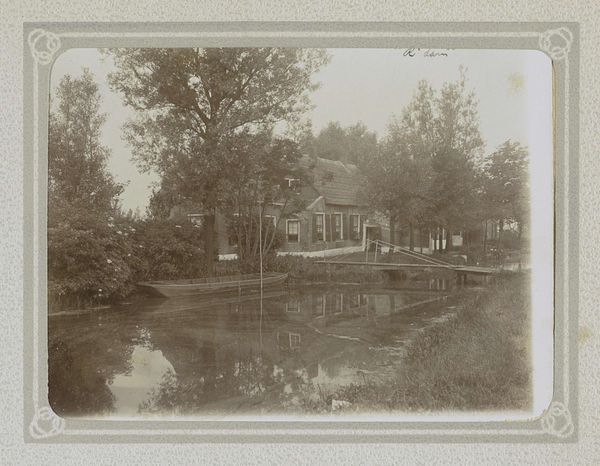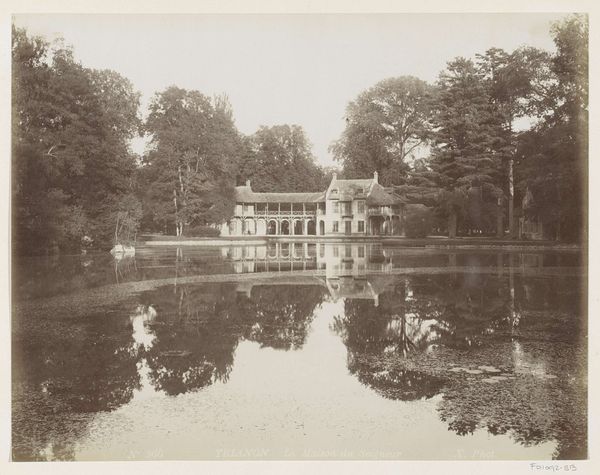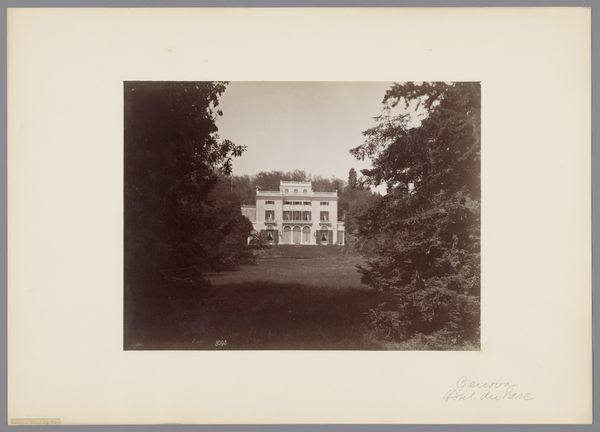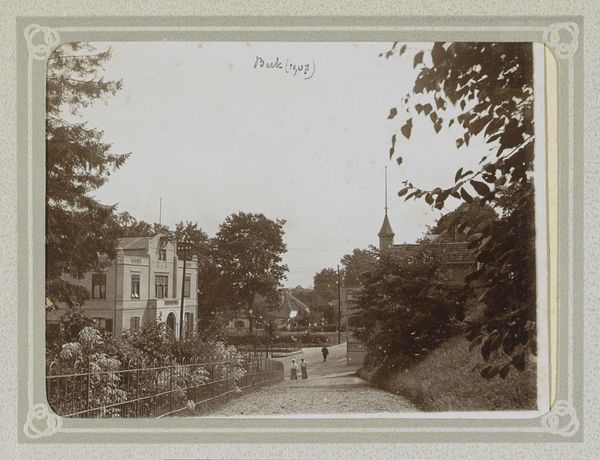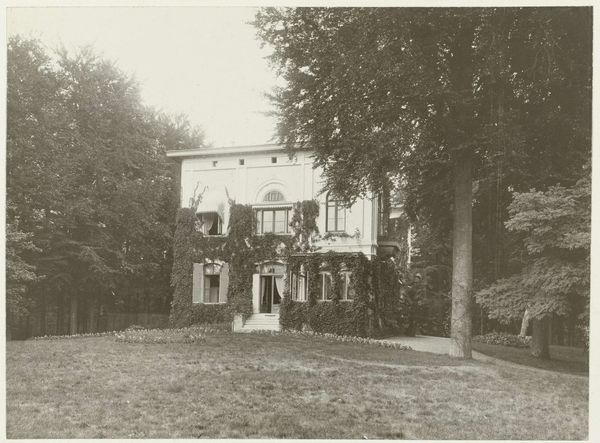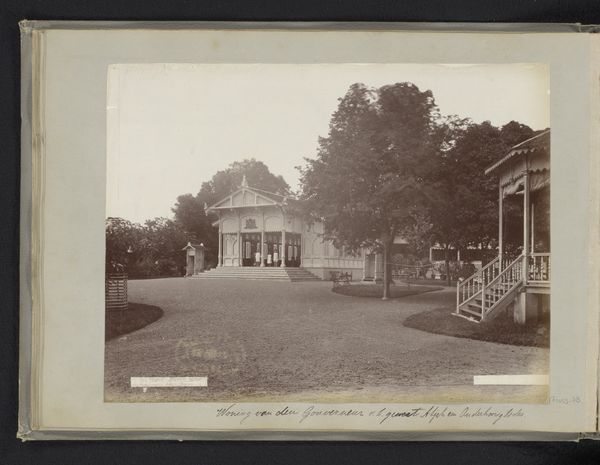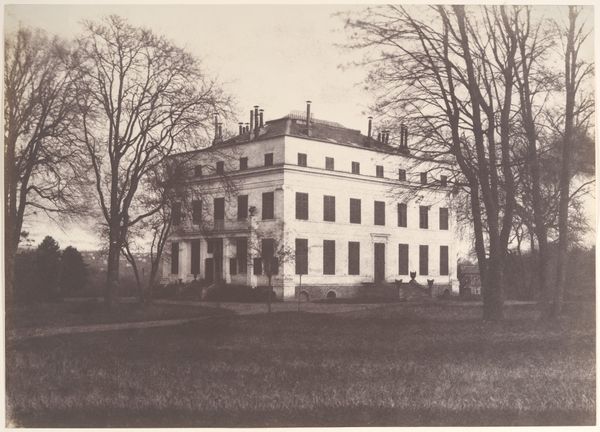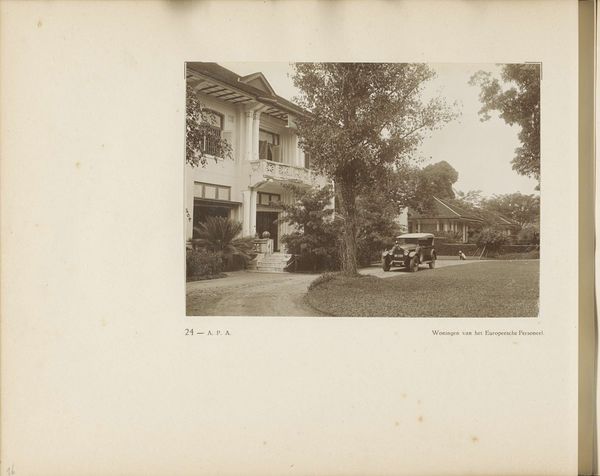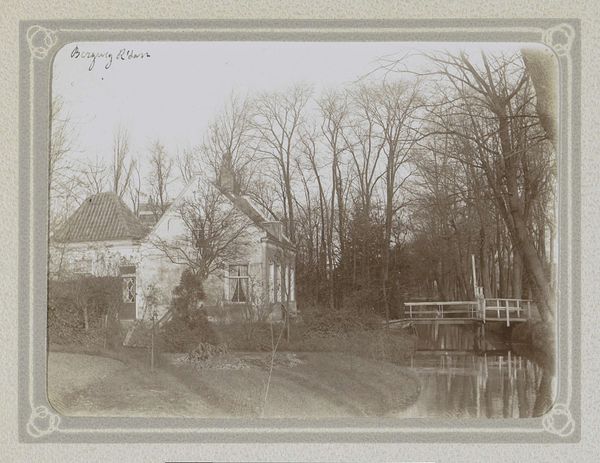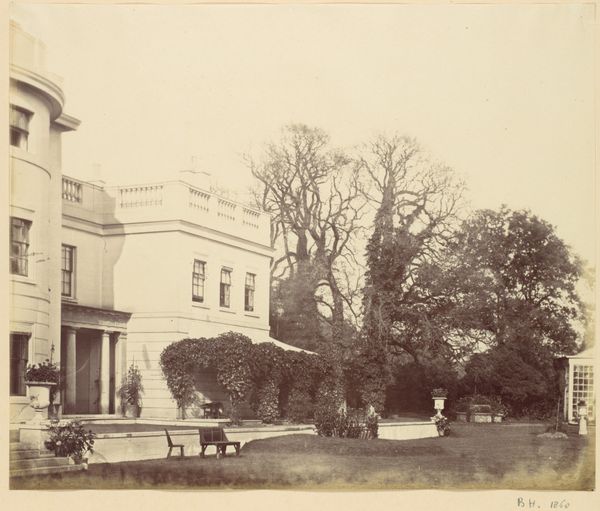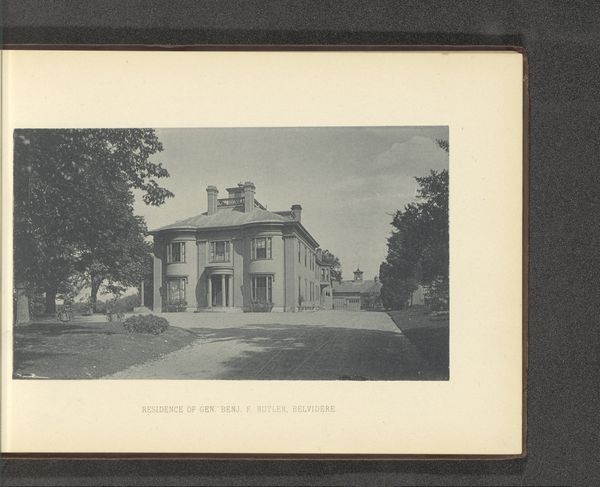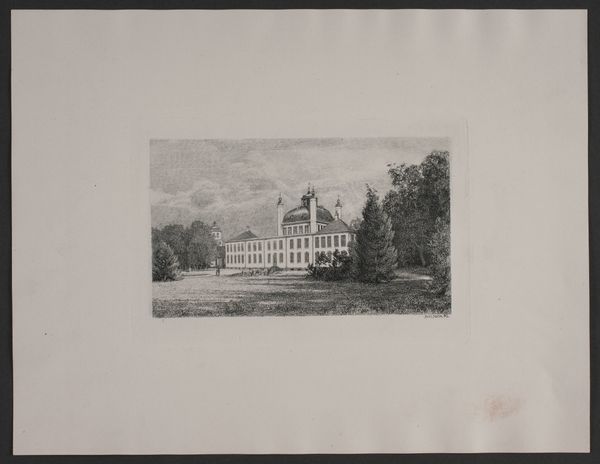
Dimensions: height 77 mm, width 106 mm
Copyright: Rijks Museum: Open Domain
Editor: This photograph, “Gezicht op de voormalige buitenplaats Duinenberg,” taken before 1894 by Hendrik Herman van den Berg, has this soft, almost dreamlike quality. The tones are so gentle and subtle, and the composition seems meticulously arranged. How do you interpret this work? Curator: Well, let’s consider this photographic print in the context of its production. Think about the resources required – the chemicals, the paper, the camera itself. Who had access to these materials in the late 19th century? It speaks to a certain class, doesn’t it? Editor: Absolutely. It definitely feels like an image of wealth and privilege. The large house, the carefully maintained grounds... Curator: Exactly. And notice how the photographer emphasizes the artifice in the scene. It's not just a simple record of a place, but a constructed view, almost like a stage set. The soft focus aligns it with pictorialism. What's interesting to me is how photography, a new medium supposedly democratizing art, here reinforces existing social hierarchies. Editor: That's fascinating. So, you see the work’s primary value not in its aesthetic beauty, but as evidence of its time’s social structure and production methods? Curator: Precisely. It’s about unveiling the power dynamics inherent in the creation and consumption of art. What labor went into maintaining those grounds, enabling the leisure depicted? Editor: I hadn’t considered it that deeply before, but that completely changes how I see the image. Curator: The key is to look beyond the surface and analyze the underlying material conditions that made this image possible. Editor: That’s a really valuable perspective. I’ll definitely be thinking more about the context of production when I look at art in the future.
Comments
No comments
Be the first to comment and join the conversation on the ultimate creative platform.
